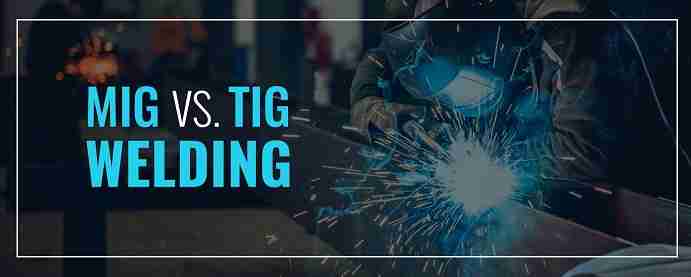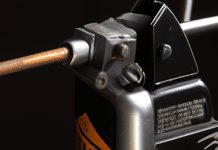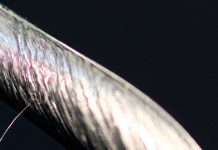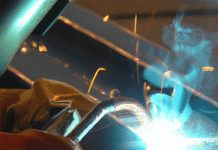When machining materials through the welding process, the two types to consider are MIG / MAG welding and TIG.
Each has its advantages over the other, and in this article, we will be listing one by one and marking their differences.
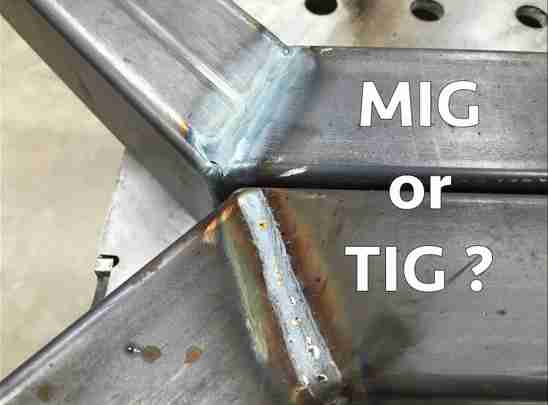
Read Next – DEWALT Adjustable Steel Welding Table
Review contents
TIG welding
The TIG system works with the heat generated by an electric arc that forms between the tungsten and the metal to be welded, where you can use or not supply metal.
This system uses gaseous protection to remove the air and avoid possible contamination by oxygen.
This system is beneficial when performing side pieces and then finishing a job.
It is usually used in aluminum or magnesium parts. Still, it can be applied to all metals, being the favorite method for thinner metals due to its precise temperature control.
Read Next – Best Tools Needed For Welding Our Top Picks
Advantages of using TIG welding:
- There are no emanations, splashes, or sparks. This is because no input metal circulates through the arc.
- Provides high-quality welds in all positions, even in hard-to-reach places.
- It is welding more resistant to deterioration, stronger, and more adaptable.
- Weld virtually all industrially used metals.
- Due to its gaseous protection, the welding area is prominent.
- No flux is required, and there is no need for subsequent cleaning in welding.
- The system can be automated, mechanically controlling the gun and metal.
MIG welding
Welding with inert metal gas (MIG) or welding with active gas metal (MAG) is a process in which an electric arc is formed between an electrode and a metal workpiece that heats metals, causing them to melt and join.
The soldier zone is generally protected from air pollution by using an inert shield or cover gas (argon or helium).
On MIG welding, we can also say that an electric arc is established between the workpiece and the electrode, which is shaped like a wire.
When the inert gas is activated, it is known by the acronym MAG. With this type of welding, you can work in three different ways, manual, semi-automatic, or automatic.
The most frequent use given to MIG welding is in small and medium thicknesses in steel structures, aluminum alloys, and also for non-ferrous materials.
Read Next – Top 5 Best Welding Tools Our Top Picks
MIG welding techniques:
- Short circuit transfer. When the short circuit is concrete, there is a change of metals. The tip of the wire thread joins the already molten weld.
- Spray transfer. It occurs when tiny metal droplets are removed from the tip of the wire and projected into the weld.
- Globular transfer occurs when said metal drops are too large to sink.
Advantages of using MIG welding:
- Increased productivity by eliminating dead times by replacing electrodes already consumed.
- It is possible to weld in any position.
- Cutting times are reduced.
- Reduction of the discontinuities of the cord, giving a good finish.
Forney Easy Weld 261, 140 FC-i MIG Welder, 120V, Green
Goplus MIG 130 Welder Flux Core Wire Automatic Feed Welding Machine
NewPosition MIG/MAG/MMA 3-in-1 Welder, 160A Stick ARC Welding Machine, Flux Core Welder, Gas/Gasless IGBT Inverter,110V
Lincoln Electric K2185-1 Handy MIG Welder
Super Deal PRO Commercial MIG 130 AC Flux Core Wire Automatic Feed Welder Welding Machine w/Free Mask 110V
SUNCOO TIG Welder, 200 Amp TIG&MMA/STICK/ARC Welding Machine Inverter DC TIG-200CP HF 110/220V Dual Voltage with LED Digital Display, Brush, Orange
Tig Welder, 200 Amp HF (110V&220V) Dual Voltag TIG/Arc Stick Portable Welding Machine,2-in-1 Inverter Welder,2 Years Manufacturer's Warranty
2 used from $152.13

